#Quentin Tarantino's favorite movie poster
Text
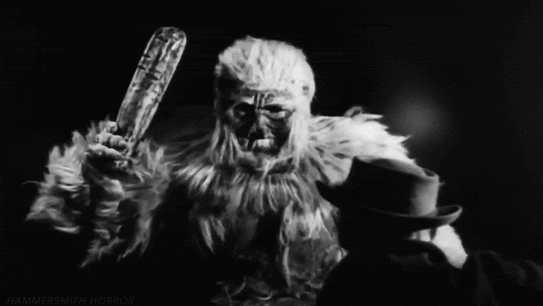
Man Beast | 1956

#Man Beast#Jerry Warren#Yeti#sasquatch#bigfoot#cryptid#monster suit#monster movie#horror#hammersmith horror#Quentin Tarantino's favorite movie poster
131 notes
·
View notes
Text
Movie Review: Ennio
Italian music composer Ennio Morricone (1928-2020) was one of the greatest musicians of all time. Without a doubt! He composed the score for over 500 films. That’s not a typo! At the 2016 Golden Globe Awards, Quentin Tarantino accepted the award for Best Music Score on behalf of Morricone for the score to QT’s The Hateful Eight and he said of him:
“As far as I am concerned is my favorite composer! When I say favorite composer, I don’t mean movie composer, that ghetto. I’m talking about Mozart. I’m talking about Beethoven. I’m talking about Schubert. That’s who I’m talking about.”
I fully agree. He’s not just one of the greatest film composers of all time, but music composers! It is so hard to choose the highlights of such a rich and robust filmography and discography, but if I had to choose, I think his score for Sergio Leone’s westerns A Fistful of Dollars, For a Few Dollars More, and The Good, the Bad and the Ugly (which I watched in my Directing class in college and did a whole paper on FYI) are all time capsule worthy! That director / composer collaboration was among the greatest in history. Other favorites of mine include The Battle of Algiers, Terrence Malick’s Days of Heaven, Samuel Fuller’s White Dog, John Carpenter’s The Thing, Brian De Palma’s The Untouchables and Casualties of War, Phil Joanou’s State of Grace, Bugsy, and In the Line of Fire. But it was QT who finally got Morricone an Academy Award for Composing (he had received an Honorary Award in 2007) for scoring The Hateful Eight. Prior to this collaboration, QT used various Morricone pieces in the soundtracks to Kill Bill Vol. 1 and Vol. 2, Death Proof, Inglorious Basterds, Django Unchained, and Once Upon a Time…In Hollywood. I got my copy of Hateful Eight soundtrack on vinyl!

movie poster
Director Giuseppe Tornatore worked with Moriccone a ton on thirteen films he directed since 1988, notably his love letter to film Cinema Paradiso (read my 2021 blu-ray review here), which had so many beautiful themes and ideas tied together by Moriccone's score. Tornatore had a great working relationship and friendship with Moriccone and made this comprehensive documentary Ennio that premiered at the 2021 Venice Film Festival and was recently released in the U.S. including Coolidge Corner Theatre.
The doc is filled with a ton of Moriccone himself telling his story and tons of anecdotes. There's a ton of archival footage and lots of clips from films. Featured interviewees include Clint Eastwood (start of a lot of the Leone films), QT, Barry Levinson, Oliver Stone, Joanou, Dario Argento and Tornatore himself. There's also a ton of musicians represented including Hans Zimmer, John Williams, Quincy Jones, Bruce Springsteen (he grew up a fan), James Hetfield (Metallica covered his music live on numerous tours) and more.

the maestro at work
This is very much a doc about film history based on the sheer amount of films he composed and at times it borders on hagiography, but at its core it is about a legend who deserves the documentary treatment. I also commend Tornatore for not turning this whole film into a doc about his own relationship with him, but more just putting himself into the pantheon of work. There was quite a lot I learned, including how he almost scored A Clockwork Orange for Stanley Kubrick, but wasn't able to due to scheduling. In the end we're lucky this doc was made when Moriccone was alive to tell his story. Expect this to be shown in both music and film classes for years to come.
for info on Ennio
3.5 out of 5 stars
#ennio#ennio morricone#giuseppe tornatore#documentary#quentin tarantino#sergio leone#phil joanou#cinema paradiso#bruce springsteen#metallica#stanley kubrick#movie review
2 notes
·
View notes
Photo

Drew a graphic novel-y comic book-y version of one of my all time favorite movie villains: Stuntman Mike from “Death Proof” by Quentin Tarantino. ☠️
Planning to render this soon so I figured I better post it for posterity before I screw it up haha *awkward self deprecation intensifies* 🥔
I decided to challenge myself with this one by drawing a hand gesture, which is not my strong suit 🙈
Anyway I had a blast making this and I hope everyone out there is challenging themselves and trying new things! Keep arting! 🤩
#stuntman mike#death proof#comic bookification#inks#black and white#tarantino#villain#kurt russell#im not obsessed#youre obsessed#no really#keep arting#you REALLY need to be sittin in my seat
29 notes
·
View notes
Text
Thanks for the tag @tarabyte3!
Get to know me! 💖
Alias/Name: Tarren
Birthday: January 1
Zodiac: Capricorn
Height: 5'1"
Hobbies: writing, reading, playing video games, watching movies/tv shows
Favourite color: red, blood red, Louboutin red, candy apple red, fire engine red, etc.
Favourite book: Plague of the Dead by Z.A Recht. I've read the first book sooo many times.
Last Song: Cheerleader by Ashnikko
Last Movie/Show: Face-Off
Recent Read: Last thing I read was some fics and they were mostly Miguel O'Hara things hehe
Inspiration: Music is always my inspiration and since it's fall/winter I'm listening to a lot of oldies/vintage music.
Story behind URL: Alright so the episode of Courage the Cowardly Dog (fave cartoon) "Everyone Wants to Direct" is one of the darker episodes and also one of my favorites because movie directors and as a kid I wanted to be one and also zombies. So naturally I latched onto the antagonist Benton Tarantella (Quentin Tarantino parody) but as a kid I thought he said his name was TaranTERROR so one day in school I made a user name and it was Tarren Terror and it's stuck ever since. My quote from my blog is also from the show, the inspirational bathtub barracuda.
Fun Fact: In the spirit of preserving a bit of history and my childhood, I purchased both (very large and very heavy) box office signs to a local movie theater of mine that was bought out by a larger company and then bought out by a furniture store who further gutted the building. The theater opened in 1996 and as far as I know they are the original signs because I've been going to that theater since I was very young. They still work and the owner of the building threw in one of those large light up poster holders they put on the side of the wall. I couldn't take the 12+ft neon snack sign, but he also let me have some of the foam popcorn pieces that were attached to it.
tags because I like getting to know you guys! 💕: @moonlight-prose @karasong @fluffyprettykitty @sunflowersteves and anyone else interested! 💕
3 notes
·
View notes
Text
thank you darling @vcasih for tagging me to post my favorite nine movies ❣️
i don't often watch movies so this list doesn't make any sense....... there are other movies that i like but these were the first to pop up in my mind ✨
i had fun looking at the posters :-) my favorite one among these is taxi driver's

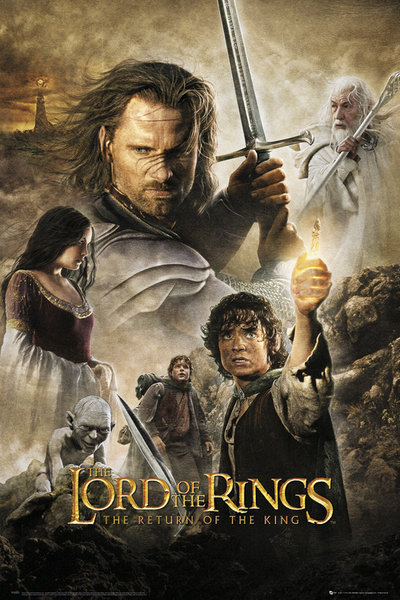
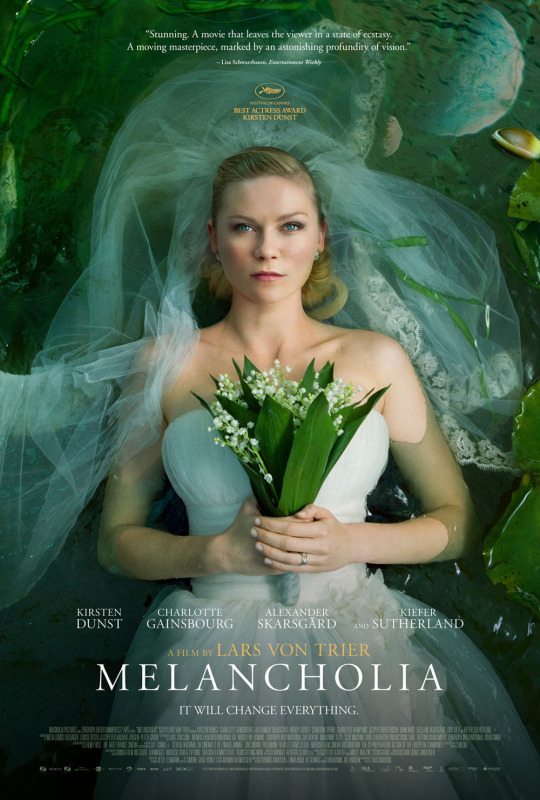

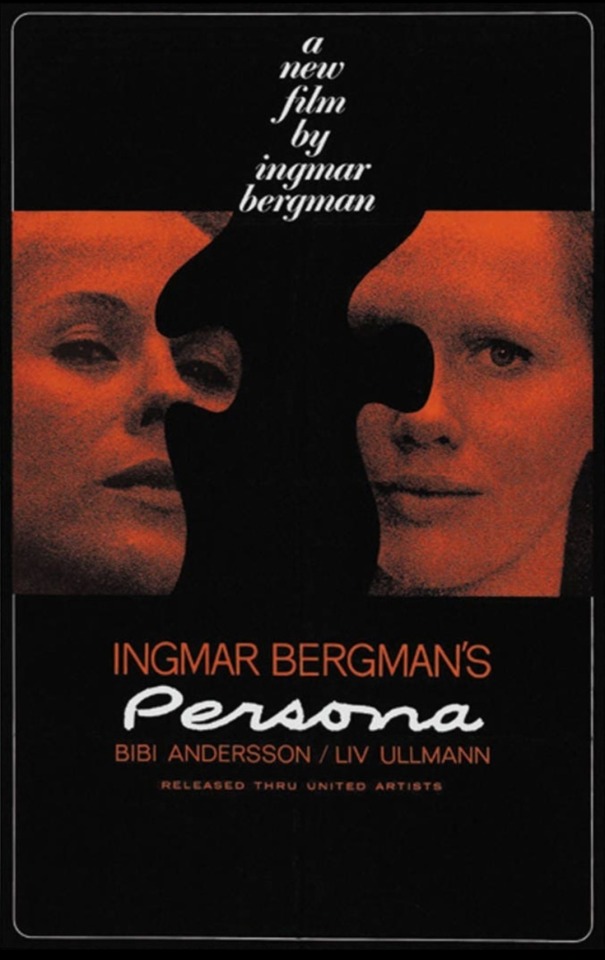

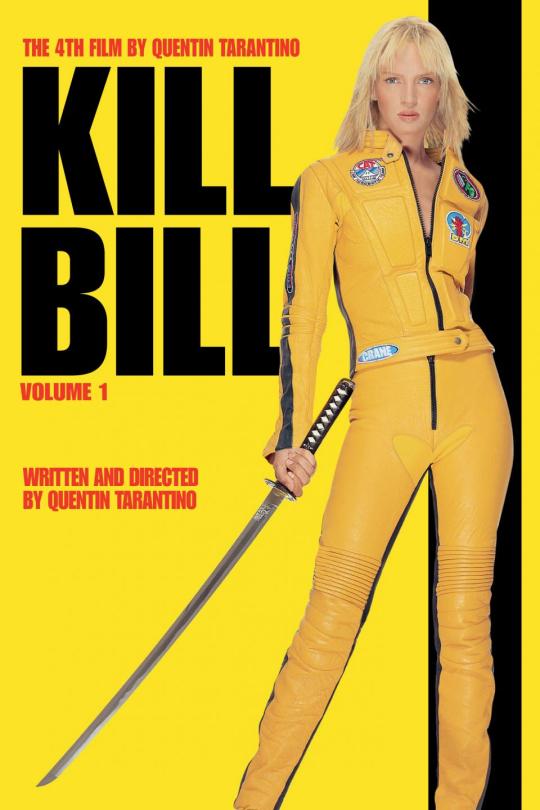


spirited away (2001) dir. hayao miyazaki
the lord of the rings: the return of the king (2003) dir. peter jackson
melancholia (2011) dir. lars von trier
carol (2015) dir. todd haynes
persona (1966) dir. ingmar bergman
taxi driver (1976) dir. martin scorsese
kill bill: volume 1 (2003) dir. quentin tarantino
tokyo godfathers (2003) dir. satoshi kon
coraline (2009) dir. henry selick
i'm tagging @lostboypdf @zoeadrien @winedark @mumintroll (if you haven't already done it + no pressure ofc 🥰)
7 notes
·
View notes
Text
Cinematic Desires: Films That Fuel Internet's Yearning for Sequels
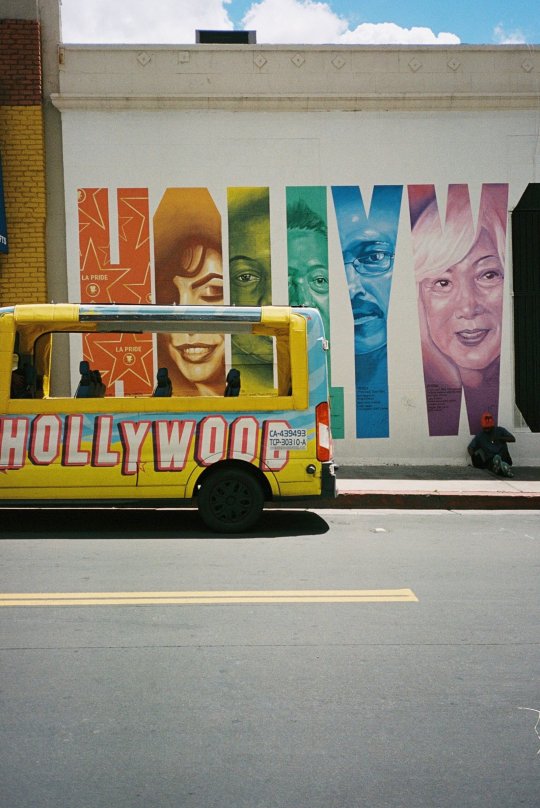
In the expansive digital expanse, movie enthusiasts fervently express their desires for sequels to films that have left indelible imprints on their hearts. The online realm buzzes with discussions about cult classics and blockbuster hits, where fans, inspired by their passion and nostalgia, eagerly articulate their hopes for cinematic continuations. Noteworthy films like Christopher Nolan's mind-bending masterpiece Inception, which left audiences pondering its enigmatic ending, have become subjects of intense online scrutiny. Fans dissect every detail, speculating about the potential for a sequel that might unravel the mysteries left in the wake of the spinning totem.
Another film that has stirred the online community's fervor is Quentin Tarantino's Kill Bill series. Uma Thurman's portrayal of the Bride, seeking vengeance in a tale of martial arts and revenge, has ignited numerous online threads. Fans passionately debate the fate of the Bride and her adversaries, longing for closure to the saga that captivated audiences globally.
Rumblings in the digital sphere also surround the cult classic The Big Lebowski. Jeff Bridges' iconic portrayal of The Dude has spurred fan theories, discussions, and even fan-made content, all centered around the desire for a sequel that delves deeper into the enigmatic world of the laid-back protagonist.
The digital landscape echoes with fervent pleas for a sequel to District 9, Neill Blomkamp's thought-provoking sci-fi film. The movie's unique take on extraterrestrial life, segregation, and human nature has left audiences craving a continuation of the story. Online forums and social media platforms are replete with fan-made posters, speculative plotlines, and impassioned pleas directed at the filmmakers to revisit the dystopian world of District 9.
Additionally, the magical allure of Studio Ghibli's animated masterpiece Spirited Away has enchanted viewers worldwide. Fans, inspired by the film's enchanting world and intricate storytelling, express their ardent wishes for a sequel that could further explore the magical realm created by Hayao Miyazaki. The internet abounds with fan art, fan fiction, and fan theories, all woven around the potential adventures of Chihiro in the spirit world.
In essence, the online universe has become a vibrant canvas where fans paint their hopes and dreams for sequels to films that have profoundly impacted them. Through discussions, fan theories, and creative expressions, enthusiasts keep the flame of anticipation alive, eagerly waiting for the day when their favorite movies will return to the silver screen. As the digital realm continues to evolve, these cinematic desires will persist, reminding us of the enduring power of storytelling in the hearts of audiences worldwide.
Read the full article
0 notes
Text

2023 Home Viewing #36: Pulp Fiction. (dir. Quentin Tarantino, 1994) Repeat viewing.
I’d not seen this since I reluctantly went to the theater with coworkers when it was new. I didn’t much like it then, but I liked it marginally more now. I also didn’t remember the final two-thirds of the film; all these years I thought the first third was the entire movie. I’ve been tired of looking at Pulp Fiction ephemera for decades now and I’m in no hurry to see another Tarantino film. My favorite part of Netflix killing their DVD-delivery service is I’ll never make it to the Kill Bill films that I put in my queue almost 20 years ago.
The well-known poster of Uma Thurman lying on the bed is an image I don’t think even appears in the film, and I’m so tired of it I can’t bear to use it here. She may be the most visually appealing person in the film, but to use here solely on a poster design is disingenuous as she isn’t the main character. There’s practically a cottage industry of Pulp Fiction fan art, but here I’m using a poster by the excellent artist Laurent Durieux that’s far more representative of the film without giving anything away. Durieux makes excellent alternate movie posters. Check out his site at http://www.laurentdurieux.com/.
0 notes
Text
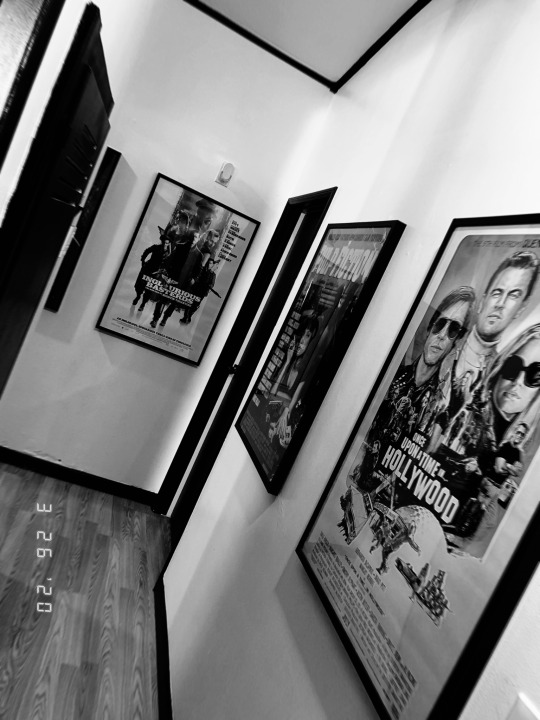
#inglorious basterds imagine#brad pitt#margot robbie#leonardo dicaprio#quentin tarantino#movies#pulp fiction#once upon in hollywood#favorite#poster#housetour
8 notes
·
View notes
Photo
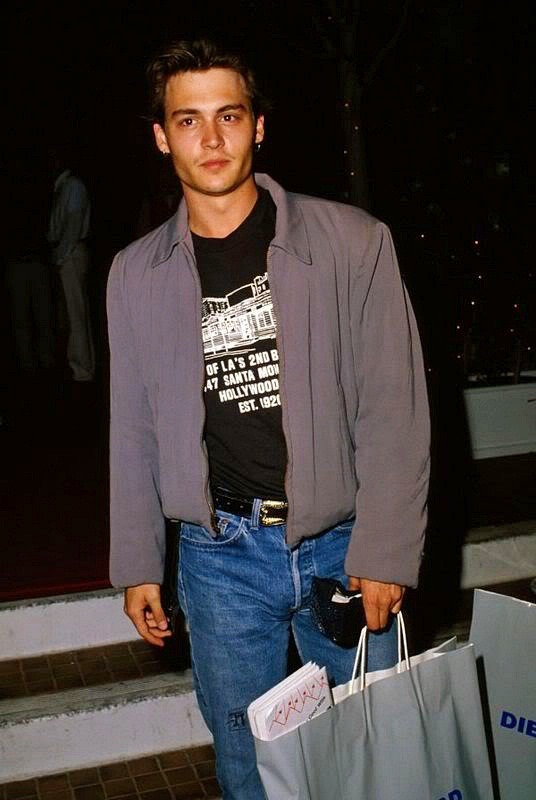







33 years ago, on July 12, 1988, Johnny attended the première of “Die Hard” at the Westwood Theatre, in Los Angeles, California
> Curiosities:
* The bag Johnny is holding is a gift bag of the movie with a t-shirt, posters, soundtrack CD, candies, and some other exclusive items.

* Johnny is wearing is a Barney’s Beanery T-shirt.
The Barney’s Beanery is the third oldest diner/restaurant in Los Angeles. Located in West Hollywood, the place was highly known in the 80’s/90’s for being a “legendary diner/celebrity hangout” gathering place of artists, writers, and other celebrities, such as Jim Morrison (who was reportedly thrown out of Barney's for urinating on the bar), Janis Joplin (who visited the place before her death) and Quentin Tarantino (who allegedly wrote most of the screenplay for his film “Pulp Fiction” sitting in his favorite booth).
Back in those days, Johnny used to go with Winona to get some coffee and order food, as well have meetings with his agent and schedule interviews for magazines.
On the front of the shirt (which used to be sold on the restaurant), and along an image of the place is written:
“Home of LA’s 2nd Best Chili.
8447 Santa Monica Bl. Hollywood, California.
Est. 1920”
And on the back is written
“Follow me to…
‘The original Barney’s Beanery’
Hollywood.”
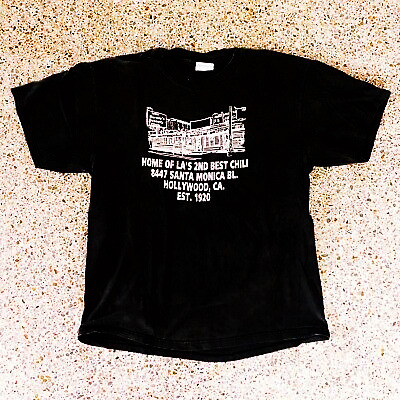
#Johnny Depp#Die Hard#Premiere#Special Event#Attending Events#July 1988#Los Angeles#California#Westwood Theatre#Curiosities
34 notes
·
View notes
Text
So hi it’s me
bringmetogreenwood. No longer that, now I’m Anne the Pancake across most platforms :D Just for some branding there.
Been a few weeks since I really engaged with Tumblr. Might as well pin something on top of this page so you know what you’re in for :D
Who am I and why should you care?
I happen to be interested in some stuff that you might also like, for example: everything Maurice (the film released in 1987, still have yet to get my book :( And I refuse to read it online), all the actors in it but mostly Rupert Graves, movies and films in general (I’m a sucker for a good script, Quentin Tarantino’s being my favorite), and queer content.
Most of my original posts will be my writings - that being film essays, analysis, fanfiction, and other types of shitposting.
In conclusion: No you don’t have to care but if you do about any of the things I listed above, do consider following and engaging with me in any way, shape or form. As introverted as I am I really love talking with people :D
Where else can you find me on the Internet?
- annethepancake on AO3: For fic, obviously. I’m now mostly writing for Maurice (My WiP: A Happier Year series), probably won’t venture to other fandoms anytime soon. I still have some past works for my previous fandom Arashi (still into them, but they are on hiatus), so if you’re interested, it’s there.
- annethepancake on Wordpress: This is my blog for essays and free writing. If you’re into in-depth analysis of stuff, I’m updating my blog once every few months or so. I have had two film essays on Brokeback Mountain and Promising Young Woman posted, next will probably come more PYW (because I’m still not over that movie) and Maurice. Featured photos you see on there are mine too, except for movie posters.
The most boring section: Information about me
Just for easier communication: I go by Anne (the most anglicized I will allow my real name to be) or Pancake (a fake name I randomly used once in Starbucks). I’m 23, genderfluid, most preferred pronoun: they/them. I used to live in The Netherlands for 4 years so I’m allowed to say gezellig and godverdomme here and there xD
13 notes
·
View notes
Text
Music for Films, Vol. II: Chick Habit

For good and for ill, Quentin Tarantino’s movies have been strongly associated with postmodern pop culture — particularly by folks whose reactions to the word “postmodern” tend toward pursed lips and school-marmishly wagged fingers. There for a while, reading David Denby on Tarantino was similar to reading Michiko Kakutani on Thomas Pynchon: almost always the same review, the same complaints about characters lacking “psychological depth,” the same handwringing over an ostensible moral insipidness. Truth be told, Tarantino’s pranksome delight with flashy surfaces and stylistic flourishes that are ends in themselves gives tentative credence to some of the caviling. Critics have raised related concerns over the superficiality of Tarantino’s tendency toward stunt casting, especially his resurrections of aging actors relegated to the film industry’s commercial margins: John Travolta, Pam Grier, Robert Forster, David Carradine, Darryl Hannah, Don Johnson and so on. There might be a measure of cynicism in the accompanying cinematic nudging and winking, but it’s also the case that a number of the performances have been terrific.
The writer-director brings a similar sensibility to his sound-tracking choices, demonstrating the cooler-than-thou, deep-catalog knowledge of an obsessive crate-digger. Tarantino thematized that knowledge in his break-through feature, Reservoir Dogs (1992). Throughout the film, the characters tune in to Steven Wright deadpanning as the deejay of “K-Billy’s Super Sounds of the Seventies”; like the characters, the viewer transforms into a listener, treated to such fare as the George Baker Selection’s “Little Green Bag” (1970) and Harry Nilsson’s “Coconut” (1971). As with the above-mentioned actors, Tarantino has sifted pop culture’s castoffs and detritus, unearthing songs and delivering experiences of renewed value — and thereby proving the keenness of his instincts and aesthetic wit. “Listen to (or look at) this!” he seems to say, with his cockeyed, faux-incredulous grin. “Can you believe you were just going to throw this out?” And mostly, it works. If the Blue Swede’s “Hooked on a Feeling” (1974) has become a sort of semi-ironized accompaniment to hipsterish good times, that resonance has a lot more to do with Tim Roth, Harvey Keitel and Co. cruising L.A. in a hulking American sedan than with the Disney Co.’s Guardians of the Galaxy (2014).
In Death Proof (2007), Tarantino’s seventh film and unaccountably his least favorite, soundtrack and screen are both full to bursting with the flotsam and jetsam of “entertainment” conceived as an industry.
youtube
In just the opening minutes, we see outmoded moviehouse announcements, complete with cigarette-burn cue dots; big posters of Brigitte Bardot from Les Bijoutiers du claire de lune (1958) and of Ralph Nelson’s Soldier Blue (1970) bedecking the apartment of Jungle Julia (Sydney Tamiia Poitier); the tee shirt worn by Shanna (Jordan Ladd), which bears the image of Tura Satana; and strutting under all of it are the brassy cadences of Jack Nitzsche’s “The Last Race,” taken from his soundtrack for the teensploitation flick Village of the Giants (1965). Bibs and bobs, bits and pieces of low- and middle-brow cinema are cut up and reconstructed into a fulsome swirl of signs. And there’s an unpleasant edge to it; the cuts are echoed by the action of the camera, which has been busily cleaving the bodies of the women on screen into fragments and parts. First the feet of Arlene (Vanessa Ferlito), propped up on a dashboard; then Julia, all ass and gams; then Arlene’s lower half again, chopped into slices by the stairs she dashes up (“I gotta take the world’s biggest fucking piss!”) and by the close-up that settles on her belly and pelvis, her hand shoved awkwardly into her crotch.
As often happens in Tarantino’s movies, furiously busy meta-discursive play collapses the images’ problematic content under multiple levels of reference and pastiche. The film is one half of Grindhouse (2007), Tarantino’s collaboration with his buddy Robert Rodriguez, an old-fashioned double-feature comprising the men’s love letters to the exploitation cinema of the 1960s and 1970s. In those thousands of movies — mondo, beach-cutie, nudie-cutie, women in prison, early slasher, rape-revenge, biker gang, chop-socky, Spaghetti Western and muscle-car-worship flicks (and we could add more subgenres to the list) — symbolic violence inflicted on women’s bodies was de rigueur, and frequently the principal draw. Tarantino shot Death Proof himself, so he is (more than usually) directly responsible for all the framing and focusing — and he’s far too canny a filmmaker not to know precisely what he’s doing with and to those bodies. The excessive, camera-mediated gashing and trimming is a knowing, perhaps deprecating nod to all that previous, gratuitous T&A. His sound-tracking choice of “The Last Race” metaphorically underscores the point: in Bert I. Gordon’s Village of the Giants, bikini-clad teens find and consume an experimental growth serum, which causes them to expand to massive proportions. Really big boobs, actual acres of ass. Get it?
Of course, all the implied japing and judging is deeply embedded in the film’s matrix of esoteric references and fleeting allusions. You’d have to be very well versed in the history of exploitation cinema to pick up on the indirect homage to Gordon’s goofy movie. But as in Reservoir Dogs, Tarantino doesn’t just gesture, he dramatizes, folding an authoritative geekdom into the action of Death Proof. In the set-up to Death Proof’s notorious car crash scene, Julia is on the phone, instructing one of her fellow deejays to play “Hold Tight!” (1966) by Dave Dee, Dozy, Beaky, Mick & Tich. Don’t recognize the names? “For your information,” Julia snorts, Pete Townsend briefly considered abandoning the Who, and he thought about joining the now-obscure beat band, to make it “Dave Dee, Dozy, Beaky, Mick, Tich & Pete. And if you ask me, he should have.”
youtube
It’s among the most gruesomely violent sequences in Tarantino’s films (which do not run short on graphic bloodshed), and Julia receives its most spectacular punishment. Those legs and that rump, upon which the camera has lavished so much attention, are torn apart. Her right leg flips, flies and slaps the pavement, a hunk of suddenly flaccid meat. Again, Tarantino proves himself an adept arranger of image, sign and significance. Want to accuse him of fetishizing Julia’s legs? He’ll materialize the move, reducing the limb to a manipulable fragment, and he’ll invest the moment with all of the intrinsic violence of the fetish. He’ll even do you one better — he’ll make that violence visible. Want to watch? You better buckle up and hold tight.
Hold on a second. “Hold Tight”? The soundtrack has passed over from intertextual in-joke to cruel punchline. It doesn’t help that the song is so much fun, and that it’s fun watching the girls groove along to it, just before Stuntman Mike (Kurt Russell) obliterates them, again and again and again. The awful insistence of the repetition is another set-up, establishing the film’s narrative logic: the repeated pattern and libidinal charge-and-release of Stuntman Mike’s vehicular predations. It is, indeed, “a sex thing,” as Sheriff Earl McGraw (Michael Parks) informs us in his cartoonish, redneck lawman’s drawl. Soon the sexually charged repetitions pile up: see Abernathy’s (Rosario Dawson) feet hanging out of Kim’s (Tracie Thom) 1972 Mustang, in a visual echo of Arlene’s, and of Julia’s. Then listen to Lee (Mary Elizabeth Winstead) belt out some of Smith’s cover of “Baby It’s You” (1969), which we most recently heard 44 minutes before, as Julia danced ecstatically by the Texas Chili Bar’s jukebox. Then watch Abernathy as she sees Stuntman Mike’s tricked-out ’71 Nova, a vibrating hunk of metallic machismo — just like Arlene saw it, idling menacingly back in Austin, with another snatch of “Baby It’s You” wisping through that moment’s portent.
For a certain kind of viewer, the Nova’s low-slung, growling charms are hard to resist, as is the sleazy snarl of Willy DeVille’s “It’s So Easy” (1980; and we might note that Jack Nitzsche produced a couple of Mink DeVille’s early records, connecting another couple strands in the web) on the Nova’s car stereo. Those prospective pleasures raise the question of just who the film is for. That may seem obvious: the same folks — dudes, mostly — who find pleasure in exploitation movies like Vanishing Point (1971), Satan’s Sadists (1969) or The Big Doll House (1971). But there are a few other things to account for, like how Death Proof repeatedly passes the Bechdel Test, and how long those scenes of conversation among women go on, and on. Most notable is the eight-minute diner scene, a single take featuring Abernathy, Kim, Lee and Zoë (Zoë Bell, doing a cinematic rendition of her fabulous self, an instance of stunt casting that literalizes the “stunt” part). Among other things, the women discuss their careers in film, the merits of gun ownership and Kim and Zoë’s love of (you guessed it) car chase movies like Vanishing Point. One could read that as a liberatory move, a suggestion that cinema of all kinds is open to all comers. All that’s required is a willingness to watch. But watching the diner scene becomes increasing claustrophobic. The camera circles the women’s table incessantly, and on the periphery of the shot, sitting at the diner’s counter, is Stuntman Mike. The circling becomes predatory, the threat seems pervasive.
If you’ve seen the film, you know how that plays out: Zoë and Kim play “ship’s mast” on a white 1970 Dodge Challenger (the Vanishing Point car); Stuntman Mike shows up and terrorizes them mercilessly; but then Abernathy, Zoë and Kim chase him down and beat the living shit out of him, likely fatally. In another sharply conceived cinematic maneuver, Tarantino executes a climactic sequence that inverts the diner scene: the women surround Stuntman Mike, abject and pleading, and punch and kick him as he bounces from one of them to another. The camera zips from vantage to vantage within the circle, deliriously tracking the action. All the jump cuts intensify the violence, and they provide another contrast to the diner’s scene’s silky, unbroken shot. The sounds and the impact of the blows verge on slapstick, and our identification with the women makes it a giddily gross good time.
youtube
So, an inversion seeks to undo repetition. Certainly, Stuntman Mike’s intent to repeat the car-crash-kill-thrill is undone, and predator becomes prey. But, as is inevitable with Tarantino’s cinema, there are complications, other echoes and patterns to suss out. For instance: as the women stride toward the wrecked Nova, while Stuntman Mike pathetically wails, the camera zooms in on their asses. Bad asses? Nice asses? What’s the right nomenclature? To make sure we can put the shot together with Julia’s first appearance in the film, Abernathy has hiked up her skirt, revealing a lot of leg. Repetition reasserts itself. In an exacerbating circumstance, Harvey Weinstein’s grubby fingerprints are smeared onto the film. Rodriguez’s Troublemaker Studios is credited with production of Grindhouse, but Dimension Films, a Weinstein Brothers company, handled distribution.
When the film cuts to its end titles, we hear April March’s “Chick Habit” (1995), with its spot-on lyric: “Hang up the chick habit / Hang it up, daddy / Or you’ll never get another fix.” And so on. Even here, where the girl-power vibe feels strongest (cue Abernathy burying a bootheel in Stuntman Mike’s face), there are echoes, patterns. Note how the striding bassline of “Chick Habit” strongly recalls the pulse beating through Nitzsche’s “The Last Race.” Note that March’s song is a cover, of “Laisse tomber les filles,” originally recorded by yé-yé girl France Gall. The song was penned by Serge Gainsbourg, pop provocateur and notorious womanizer. The two collaborated again, releasing “Les Sucettes,” a tune about a teeny-bopper who really likes sucking on lollipops, when Gall was barely 18; the accompanying scandal nearly torpedoed her career. Gall refused to ever sing another song by Gainsbourg, and disavowed her hits.
Again, that’s all deeply embedded, somewhere in the film’s complicated play of pop irony and double-entendre and the sudden explosions of delight and disgust that intermittently reveal and conceal. Again, you’d have to know your pop history really well to catch up with the complications, and Death Proof moves so fast that there’s always another reference or allusion demanding your attention as the cars growl and the blood spurts. Too many signs to track, too many signals to decipher — that’s the postmodern. But perhaps we have become too glib, assuming that all signs are somehow equivalent. Death Proof insists otherwise. Much has been made of the film’s strange relation to digital filmmaking, of the sort that Rodriguez has made a career out of. Part of Grindhouse’s shtick is its goofball applications of CGI, all the scratches and skips and flaws that the filmmakers lovingly applied. They are digital effects, masquerading as damaged celluloid. Tarantino cut back against that grain, filming as much of the car chase’s maniacal stuntwork in meatspace as he safely could. Purposeful practical filmmaking, for a digitally enhanced cinematic experience, attempting to mimic the ways real film interacts with the physical environment and its manifold histories. Is that clever, or just more cultural clutter?
Amid all the clutter that crowds the characters onscreen, and their conversations in the film’s field of sound, it can be easy to lose track of the distinctions between appearances and the traces of the real bodies that worked to bring Death Proof to life. Which is why Tarantino’s inclusion of Bell is so crucial. She provides another inversion: Instead of masking her individual presence, doing stunts for other actresses in their clothes and hair (for Lucy Lawless in Xena: Warrior Princess, or for Uma Thurman in Tarantino’s Kill Bill films), Bell is herself, doing what she does best, projecting the technical elements of filmmaking — usually meant to bleed seamlessly into illusion — right onto the surface of the screen. And instead of allowing one group of girls to slip into a repeated pattern, bodies easily exchanged for other bodies, Bell’s presence and its implicit insistence on her particularity (who else can move like she does?) breaks up the superficial logic of cinema’s market for the feminine. She disrupts its chick habit. There’s only one woman like her.
youtube
Jonathan Shaw
#music for films#chick habit#jonathan shaw#dusted magazine#death proof#quentin tarantino#reservoir dogs#grindhouse#Dave Dee Dozy Beaky Mick & Tich
13 notes
·
View notes
Text
Movie Review: Godard Cinema
In September 2022, we lost one of the masters of cinema at 91. Jean-Luc Godard was one of the all time greats. His filmography is unlike any other directors. He began as a film critic and co-founded the French New Wave. As I was getting serious about filmmaking, it was very inspirational to watch Godard’s films. He was trying new things, i.e. the jump-cut in Breathless. His films seem like they are being made up as they go along, but yet that have so much to say about a number of issues. You watch this films and you can totally see the influence he had on Martin Scorsese, Francis Ford Coppola, Jonathan Demme, Quentin Tarantino and countless others. The French New Wave is so groundbreaking: a group of cinephiles who didn’t need to go to film school but just felt their love and passion for films was enough to make their films is something that laid the foundation for independent cinema as we know it. Godard’s 1960 feature-length debut Breathless is one of my personal favorites. When I first met my wife, we bonded over French cinema, particularly Godard’s films we both loved. On our second date, I bought her a mini-poster of Breathless. She still has it in our room! Another favorite of mine is Band A Part, which I saw a special screening of in October 2022 at the Brattle Theatre and it was my #1 Movie-Going Event of 2022. It was my first time seeing it on the big screen and it reminded me of the power of Godard's cinema. Now there's a new documentary that was just released Godard Cinema from Kino Lorber.

movie poster
The doc look at Godard's film career. I stress that because this is not a deep dive into his personal life, but his work as a filmmaker. There's loads of clips from his films, tons of analysis from film historians, and archival footage. For me this doc really came alive when we had Godard himself talking in archival footage and/or cast members. My favorite was Julie Delpy, not just because I'm a big fan of hers but because she got her start as a teen working with Godard on Detective. You can't help but feel like he truly influenced some of the directing she went on to do.

Godard in action
There's been other docs about Godard and this one is sort of expecting the audience to be fans, and in my case I am, hence I enjoyed it. But it did feel very academic and I could've done with more cast / crew / filmmakers-influenced-by interviewees. But like a lot of good filmmaker docs, this made me want to check out some of Godard's movies and re-watch some of my favorites.
For info on Godard Cinema
3.5 out of 5 stars
0 notes
Text
ONCE UPON A TIME…IN HOLLYWOOD review

ONCE UPON A TIME…IN HOLLYWOOD is my favorite movie of the 2010’s.
I’ll give you a minute to put your recently-blown mind back together.
So why do I love this movie so much? The overall response to Quentin Tarantino’s supposedly penultimate opus has been very positive if not rapturous, but I’ve seen some surprisingly lukewarm and even negative reviews, with people criticizing it for being slow, meandering, lacking in depth or *shudder* boring. Obviously the quality of any movie is subjective, as I’m quick to remind anyone who hates Michael Bay movies, but I honestly don’t understand people who dislike OUATIH. Maybe it’s a matter of expectations, because I didn’t know how to feel about the film for much of the first time I watched it either.
The year is 1969, a time of great political and cultural change in the country and in the entertainment industry. The star-driven films of yesteryear are giving way to grittier, artsier, more auteur-driven works as we primarily follow Rick Dalton (Leonardo DiCaprio), former star of a popular cowboy show whose failed attempt to start an A-list movie career has left him relying on guest spots as TV villains-of-the-week to stay afloat. This is wonderfully laid out in the opening scene where he meets casting director Marvin Schwarz (Al Pacino, easily his best role since JACK & JILL), who lays out Rick’s lowering hierarchical status (“Who’s gonna kick the shit out of you next week? How about Batman & Robin? PING. POW”), while offering him an opportunity to be a leading-man again in Italian pictures.

Tagging along is Rick’s best, and maybe only, friend Cliff Booth (Brad Pitt), Rick’s go-with-the-flow stunt-double who in the slowdown of Rick’s career has effectively become his driver and gofer, as well as Rick’s sole source of emotional support. Rick is also neighbors with Sharon Tate (Margot Robbie), the beautiful young actress and wife of then-superstar director Roman Polanski (whose inclusion in the film is minimal and handled tastefully), as she lives out her idyllic life, beloved by those around her like the ray of sunshine she was in real life. Her gated, hillside home looms over Rick’s, as he ponders aloud about how even meeting her the right way could resurrect his career.

For almost two-and-a-half hours, we follow these three characters as they just live out their lives, Rick nursing hangovers and having emotional breakdowns in front of his 8-year-old co-star on set while contemplating his future, Cliff going where the wind blows him while taking care of his adorable and highly-trained dog, and Sharon as she drives around Old Hollywood, spends time with her friends, and sneaks into a matinee showing of one of her movies, her eyes and infectious smile beaming with pride when the audience laughs at her comedic timing and cheers her martial-arts prowess.
I think it’s safe to say it’s not the film any of us were expecting from Quentin Tarantino. Having only made loud, gory, over-the-top genre pastiches for the last 15 years, you’d expect from the trailers for this to be about an actor and his sexy stunt-double getting mixed up with the Manson family before teaming up with Bruce Lee to save Sharon Tate from her horrific real-life fate, mixed with the filmmaker’s usual self-indulgent homages to films of yesteryear. While some of this is true to some extent, it’s surprisingly a much more relaxed, easygoing dramedy that follows a trio of funny, charismatic people as they just…exist, as people living in the moment instead of relics.
OUATIH is much more concerned with atmosphere, character, and capturing the feeling of a bygone era than the traditional narrative structure. It’s more effective than pretty much every nostalgia trip movie I've ever seen because you can feel Tarantino's affection for this era of his childhood bleed through every character, car, song, radio advertisement, TV show, background poster, etc. It’s through this meticulous level of detail and willingness to just hang out with these characters and take in this world that he reconstructed, Tarantino successfully resurrects the era in all its 35mm glory, but with the knowing twinge of real-world melancholy.
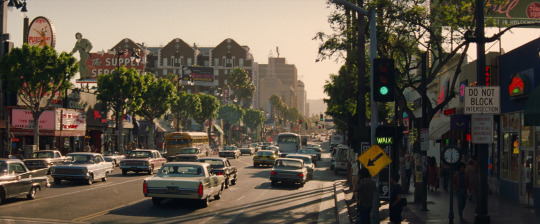
I guess the reason I love it so much is because the love that Tarantino has for everything and everyone in it is so tangible that it’s infectious. Watching OUATIH I honestly felt like I understood him better as both a filmmaker and as a person. He shows a level of restraint and maturity I haven’t seen since JACKIE BROWN. Even most of his trademark foot fetishizing is tasteful and subdued (I say “most” because I recall at least three close-ups of actresses’ feet that definitely made him a bit sweaty behind the camera). He’s a weird, shameless nerd with a big ego, but he’s 100% sincere about expressing his love for film and its rich history. And it’s this love, and the skill and style with which it’s expressed, that just put a big smile on my face each of the 6 (SIX) times that I’ve seen it since it came out.
Tarantino offers a tantalizing contrast between reality and fantasy. Throughout the film, as the characters of Hollywood live in their own idyllic world, relaxing in pools or driving around in bitchin’ cars, we also see the disquieting eeriness and griminess of the Manson family. The soundtrack and accompanying old-timey commercials for tanning butter or Mug Root Beer that plays through a lot of the film is a joy to listen to, but we also hear news bulletins of the war in Vietnam or the aftermath of the Bobby Kennedy assassination. You could argue this is just to set the scene for the era, but it feels too deliberate, because even after that joyously fantastical ending, we remember that it was just a fairy tale and real life didn’t turn out as pleasantly. Tarantino’s ability to make his world and characters so meticulously detailed and lived-in works to great effect in instilling a bittersweet melancholy to this film in a way I was really taken aback by. It feels like a window into his soul, someone who yearns for the fantasy of the world he grew up in but remembering that not all good things last and not everything in your nostalgic past was good to begin with.

One beautiful, spellbinding scene is Rick and Cliff coming back from their excursion into the world of Italian filmmaking. In this montage, we see Rick, Cliff and Rick’s new Italian wife arriving at the airport and driving home before unpacking their baggage, interspersed with Sharon Tate welcoming a guest at her home and having lunch, before cutting to a series of shots of famous LA landmarks like Grauman's Chinese Theatre, Taco Bell, and Der Wienerschnitzel all meticulously resurrected in their retro glory as they light up the night. “Baby, baby, baby you’re out of time”, sings Mick Jagger as we’re watching multiple stories about people who are each embodying those words: Rick’s career, his friendship with Cliff, Sharon Tate, and Hollywood itself.
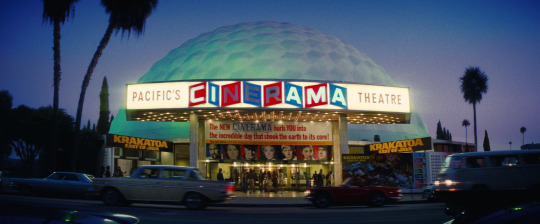
Tarantino himself feels like one of the last mainstream auteur filmmakers, as well as one of the last and biggest proponents of shooting large-budget movies on film (even Scorsese’s embraced digital now, the fantastically-talented traitor). And with the rise of streaming services, one can’t help but feel like the movie-going experience itself is also becoming obsolete, especially recently, what with theaters going to war with distributors over fucking TROLLS: WORLD TOUR, not to mention that global pandemic we’ve been having lately all but killing general audiences’ enthusiasm for the movie theater experience (Christopher Nolan’s TENET certainly didn’t help). If all these things, both real and fictional, are indeed out of time, then at least with Tarantino’s penultimate film they get one hell of a bittersweet sendoff, a great time that’s more of an Irish wake than a funeral, and it’s a film I have no issue calling a truly introspective, late-career masterpiece.
And that’s without mentioning uniformly incredible cast. Leo DiCaprio, an actor I normally don’t care too much for, gives the best and funniest performance of his career as a dependent prima donna actor clinging to his remaining fame. Brad Pitt earns the hell out of his Oscar as an embodiment of old-school masculinity and charisma with an amazing set of abs (and everything else) whose outward coolness masks his mysterious past and complete badass-ness. Margot Robbie shines in her depiction of Tate, a beacon of warmth and likability who in many ways symbolized the love and carefree attitudes of the swingin’ 60’s. I’ve heard people criticize her character for not having a lot of dialogue, but to me it feels like they’re ignoring the visual storytelling, which just gives way to them assuming the film is sexist just because the female lead isn’t constantly monologuing. Every member of the supporting cast is memorable with their own quirks and great lines, no matter their screentime.
And of course, it wouldn’t be a Tarantino joint without some truly hilarious and shocking violence, and without going into spoiler territory, the last 20 minutes delivers on this promise to such a degree that I feel comfortable calling it the best thing he’s ever done. Some may decry the climax as unnecessary or over-the-top, but the way it leads to an alternate world while subtly acknowledging what happened in the real one is cathartic beyond belief. And if you’re paying attention, every scene in the movie has been quietly building towards this finale, which to me takes away any potential of feeling meandering in the story. If you saw the movie and didn’t much care for it, I recommend giving it another watch. Having the context ahead of time makes it feel so much more rewarding, and even on the fifth watch I’m noticing clever, subtle set-ups I missed beforehand.
It’s also just super cozy and really easy to watch. The two hours and 45 minutes fly by. I could watch a 4-hour version of this.
Quentin, if you’re reading this, please don’t let your last movie be Star Trek.
2 notes
·
View notes
Text
get to know me
tagged by @nazi-puncher-blazkowicz thank you so much!!! c:
favorite fictional character(s):Ash Lynx from Banana Fish, William B.J. Blazkowicz from Wolfenstein, Revy from Black Lagoon
top 5 movies: I really love inglorious basterds even if Quentin Tarantino is fucking weird
top 5 shows: Metalocalypse, The Venture Bros., Aqua Teen Hunger Force, 12 oz Mouse
what continent am i on: North America!
mental age: 60, My PTSD makes me feel so tired and old and on top of that I use a cane .
nickname: Wy or Ash, I get called Grampa a lot too
favorite drink: Hot Chocolate
room aesthetic: Cozy, lots of figures and posters
clothes style: Dad who griils and listens to the beach boys too much
pronouns: He/him!!
last thing i ate: Chocolate
top 5 bands: The Beatles, Dethklok, System of a Down, Electric LIght Orchestra, Weezer
3 notes
·
View notes
Text
Quentin Tarantino’s Star Wars?: Digital Cinema, Media Convergence, and Participatory. Henry Jenkins
Quentin Tarantino’s Star Wars?: Digital Cinema, Media Convergence, and Participatory weeks reading Quentin Tarantino’s Star Wars starts off fairly comical by saying “one day a little fat girl in Ohio is going be the new Mozart”. I honestly do not know what's funnier.The fact that he mentioned a fat girl or the fact that it is grammatically incorrect. Maybe both.Either way I am familiar with the readings in Media and Cultural studies keywords and I can honestly say this is one of the more entertaining chapters. Although still long and boring the chapter has important information that I will touch on below.The reading starts off by bringing up the fact that circulation of media due to the net can skew the true author of the material and gives you little idea on where it has been. This reminds me of The Wilhelm scream used in so many movies. Moving on, the Star Wars poster is comical and represents how often star wars has been re-used. It also depicts how contemporary popular culture operates. It shows how fans are important to digital cinema as participants. Old strategies of one media platform have been dying off and replaced by synergized strategies that run fluidly between all platforms (comics into computer games,television shows into films, and so forth). This allows people to move from watching T.V to purchasing a film. There is also another point to preserve intellectual property so that the corresponding company can make more money (which star wars did well).New media consumption now allows anyone to mess with and recirculate contentment. This brings up the issue of the average person wanting to be a media producer however the companies want to keep their dominance. The world wide web has become the storage for the do it yourself movement. Prior to the internet the cave man had to use writing or drawing. However doing so they did not have a platform to share their ideas. Another perk of the web is that minorities have a place to express themselves and question things.Fans of films were early adopters of the ability to add onto and make new content related to their favorite movies. Not to take profits away from the film but to feel somewhat affiliated with it. The general public see’s them self as consumers which makes this thought odd because it goes against the typical folk tale like tradition that follows with the last point.However film was still treated like folktale. People used material to represent their own ideas and thus forming their own communities. These communities explored and questioned the ideology of mass culture which made for ideas inside and outside the cultural logic of commercial entertainment. Fan fiction which helps the imagination of people's favorite programs helps bring interests through fantasy while not causing much widespread distribution. Although peaceful the rejection of definitive versions produced made media outlets want to shut down some ruining the free play aspect that once stood. Straight from the text: “As early as 1981, Lucas film had issued legal notices and warnings to fans who published zines containing sexually explicit stories, while implicitly giving permission to publish non-erotic stories about the characters:” page 597.This company “Lucas film” than gave Star wars fan a safe platform to post on but on terms that everything people post can be used by the company. I honestly think this gives people more of an incentive to post due to the fact that their ideas could be in a film. Media often monitored pages like this often and even added in their 2 cents.Common things here where crossovers, genre mixing , ext.Also the web gave amateur film makers an easier way to edit which gave opportunity for them to directly reshape their material. Allowing amateurs to use the exact special effects used in films like Star Wars. This could be upsetting because just a decade before it would have cost a small fortune to do this in Star Wars.There has become a loop between the do it yourself world and the industries. This new platform of the web allows for experimental and innovation. Amateurs testing the waters could draw crowds of people or no one at all. Things that catch the attention of many-could be picked up by the mainstream and the mainstream can direct the amateurs.
1 note
·
View note